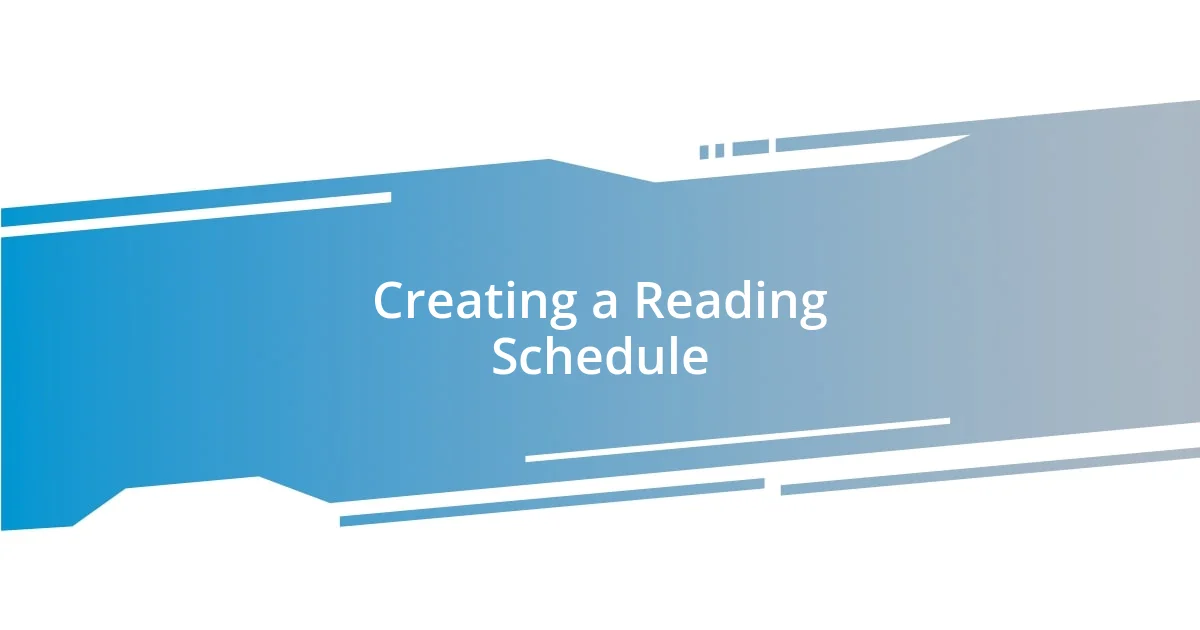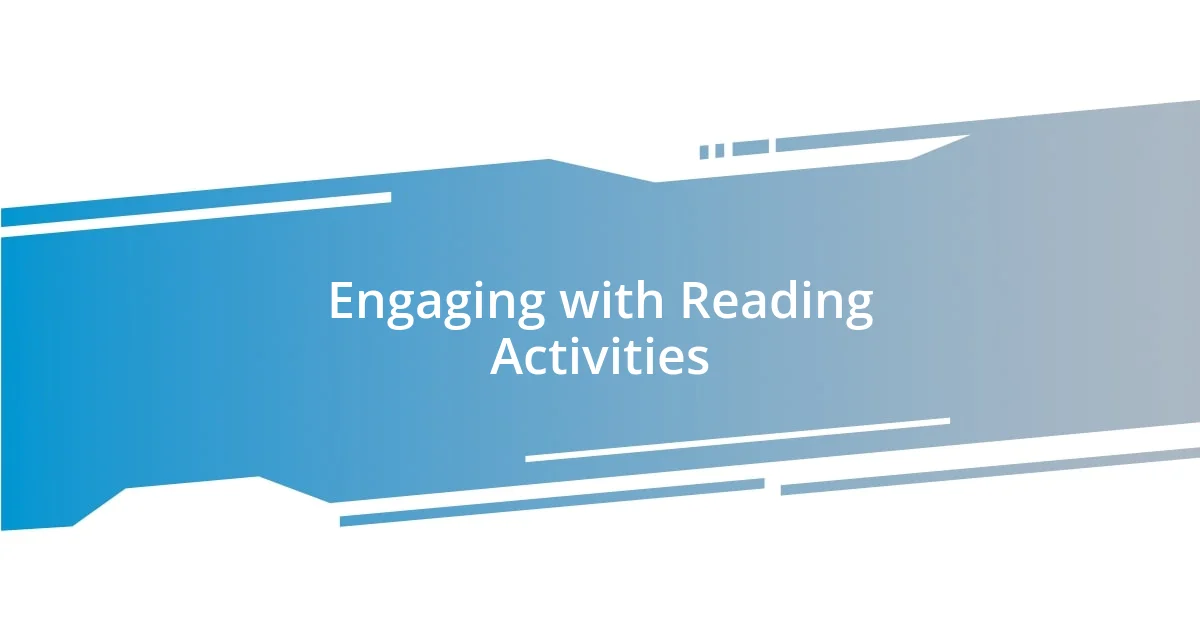Key takeaways:
- Setting clear, achievable goals for family reading can enhance engagement and create a sense of shared adventure.
- Involvement in book selection and creating themed reading activities fosters curiosity and deepens family bonds.
- Tracking progress visually and celebrating reading milestones transforms accomplishments into cherished memories, motivating continued participation.

Understanding Family Reading Challenges
Family reading challenges can be incredibly rewarding, yet they often come with their own set of hurdles. I remember the excitement in our home when we first decided to embark on one. The kids had picked their favorite genres, and I was fascinated to see their individual tastes emerge. Isn’t it intriguing how reading can reveal a child’s personality?
One major challenge is finding common ground amongst various reading preferences. For instance, while my daughter adored fantasy worlds filled with magic, my son leaned towards non-fiction, drawn to real-life adventures. This difference led to many discussions: how could we cater to both interests without compromising? It made me realize that incorporating a theme or a common goal could encourage cooperation and excitement rather than competition.
Another obstacle is maintaining motivation throughout the challenge. There were days when the kids were too tired or distracted to read, and I wondered: how do I keep the momentum going? I found that sharing our thoughts on the books helped reinvigorate their interest. As we turned the pages together, I witnessed firsthand how our conversations sparked deeper connections, turning reading from a solitary activity into a delightful family bonding experience.

Setting Goals for Family Reading
Setting goals for family reading is essential to creating a cohesive experience. When we first established our family reading challenge, I realized that setting clear, achievable goals would help keep the kids engaged. For example, we decided on a target of reading together for at least 20 minutes each day. It was amusing to see my son, who usually scoffed at the idea of setting times, suddenly be motivated when he saw the weekly stickers we used to track our progress.
Here are some effective goal-setting strategies that worked for us:
- Assign book themes for each month to diversify our reading.
- Create individual reading logs for everyone to express their thoughts and recommendations.
- Plan a family reading night where we showcase our favorite book from the month.
- Set mini-challenges, like reading to a younger sibling or trying a new genre.
- Celebrate milestones with little rewards, such as a trip to the library or a special treat.
This approach not only fostered excitement but also helped everyone feel involved and invested in the process. Each small goal became a shared adventure, leading us deeper into a world of stories while nurturing our family bond.

Choosing Suitable Books for All
Choosing the right books for everyone in the family can feel like a daunting task. I remember one evening, surrounded by a sea of different titles, trying to find something that resonated with each family member. It was challenging but ultimately rewarding when I discovered that a fantasy novel with a strong female lead could appeal to both my daughter and my son’s love for adventure. I’ve learned to look for books that spark curiosity and ignite conversations, bridging gaps between varied interests.
In my experience, a great way to approach this is by considering age-appropriate content that also includes diverse cultures and perspectives. For example, I once brought home a multicultural picture book that opened up discussions about traditions from around the world. It was heartwarming to see my kids empathize with characters from different backgrounds, realizing that stories can teach us about our shared humanity. Selecting books that introduce new ideas while still entertaining can create those ‘aha’ moments that everyone enjoys.
A practical tip I found helpful is to involve the kids in the selection process. Whenever we head to the library, I encourage them to choose a title outside of their usual preferences. This has led to some surprising choices and delightful discussions. One time, my son picked up a historical novel, and I was amazed at how engaged he became in the story. Not only did he enjoy reading it, but he also shared fascinating details with the family, sparking a group interest in history.
| Criteria | Examples |
|---|---|
| Age Appropriateness | Books that match children’s developmental stages |
| Diversity | Books that reflect various cultures and experiences |
| Family Interests | Choosing genres that excite everyone |
| Engagement | Books that provoke discussion and curiosity |
| Involvement | Letting kids pick books outside their comfort zone |

Creating a Reading Schedule
Creating a reading schedule can transform reading into a family bonding experience. In our house, we’ve found that consistency is key. I remember the first time we sat down to create our weekly reading plan. Everyone had their input, and it was exciting to see how motivated my daughter was when she suggested evening storytime on Wednesdays after dinner. It quickly became something we all looked forward to, adding a rhythm to our week.
I’ve also discovered that flexibility within the schedule is important. One time, we set aside a Saturday afternoon for a reading marathon, allowing each family member to pick their own cozy reading spot. This not only encouraged individual preferences but also led to spontaneous discussions about our books over snacks later. Have you found that certain times of the day work better for family reading? For us, it’s become a shared ritual that deepens our connections and enriches our understanding of each other’s interests.
Another effective strategy is planning reading-related outings that flavor the schedule. I vividly recall our trip to the local bookstore that I organized as a reward for completing our first month of reading. The kids were excited to spend their allowance on new books, and we ended up discovering a whole new series that everyone got hooked on. Creating these memorable experiences around our reading schedule infuses it with joy and anticipation, making it much more than just a routine—it becomes a treasured family tradition.

Engaging with Reading Activities
Engaging with reading activities can be a fantastic way to deepen family bonds while sparking curiosity. I vividly recall one Sunday afternoon when we decided to host a themed reading session. Each family member dressed up as a character from their favorite book. My daughter transformed into a pirate from her beloved adventure series, while my son donned a wizard’s robe. Laughter filled the room as we shared snippets from our chosen stories, igniting lively discussions about plot twists and character motivations. Doesn’t it feel great when books come alive like that?
Another idea that worked wonders for us was creating interactive challenges around the books we read. For instance, after finishing a mystery novel, we set up a mini scavenger hunt based on the plot’s themes. The kids loved searching for clues around the house, and it drove home the story’s elements in a fun, engaging way. Reflecting on that day, I can still feel the thrill of teamwork and excitement. Don’t you think it’s incredible how activities like this not only make the reading experience memorable but also help reinforce critical thinking skills?
I’ve found that incorporating creative arts into our reading time can elevate the experience even further. Last month, after finishing a collection of fairy tales, we did a craft session where everyone illustrated their favorite scene. My little ones poured their hearts into their drawings, adding personal touches that reflected their views on the tales. Seeing their enthusiasm reminded me how reading can inspire creativity beyond the pages. Is there anything more fulfilling than watching your kids express themselves through art while being motivated by a good story?

Tracking Progress and Celebrating Success
Tracking progress in our family reading challenges has been a game changer. I created a colorful chart that we hang in our kitchen, where everyone adds a sticker each time they finish a book. Seeing those stickers accumulate brings a rush of pride, and I can’t help but ask, “Who wouldn’t feel motivated to keep reading when they see their efforts visually represented?” The kids eagerly compete to see who can reach the next milestone first, and the friendly rivalry adds an element of fun.
Celebrating success is just as crucial as tracking progress. After each month, we host a little celebration where we share what we’ve read and enjoyed. I remember our first celebration vividly; we baked a cake together and decorated it with the names of all the books we’d completed. I was amazed at how excited the kids were to recount their stories, and it struck me that these moments foster a sense of achievement, making reading feel more rewarding. Have you ever noticed how a simple celebration can transform an accomplishment into a cherished memory?
One approach I found effective is rewarding achievements with small treats. For example, when we completed our first reading challenge together, we had a movie night featuring a film adaptation of a book we enjoyed. The excitement of the reward kept everyone engaged, and we even compared the book to the movie afterward! It thrilled me to see my children excitedly discussing the differences. Isn’t it fascinating how integrating rewards can create lasting enthusiasm for reading?
















